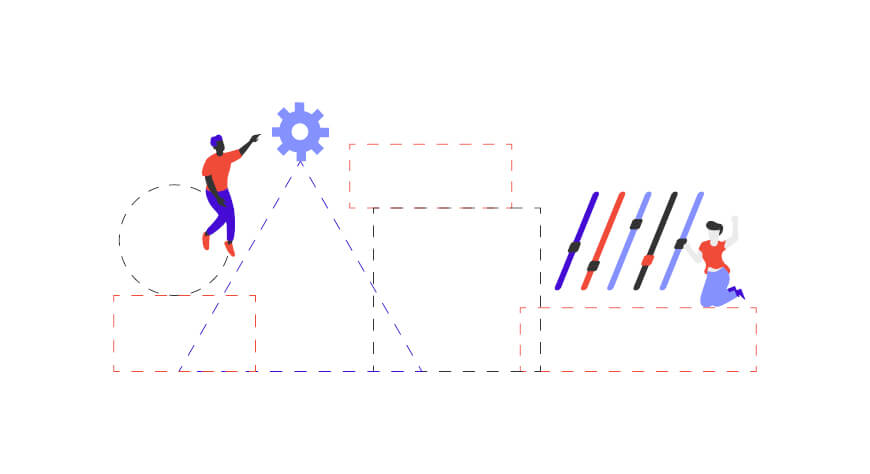
Even the best products can fail if your customers don’t understand how they work.
When you’re so involved in the internal development, sales, and support of a software product, you can lose sight of showing your customers how they can use your product to succeed in their own roles.
It’s important to step back and ask the important question: what happens if you don’t have an efficient customer training system in place?
Here’s what we do know. American businesses lose $136.8 billion a year due to “avoidable customer switching.” This is referring to customer churn, where your competition does a better job of delighting your customers than you do. Ouch.
Simply put, customer training isn’t optional – it needs to be a core component of your acquisition and retention strategies.
Investing in customer training programs is a huge step toward long-term business success. It’s one of the most impactful ways to create game-changing experiences that go far beyond basic user manuals and generic video tutorials.
Why Invest in Customer Training?
Why should you bother learning the customer training software best practices? What benefits can you expect from putting effort into your customer training program?
- Better customer loyalty: Clients who receive first-hand knowledge from your business are more connected to your brand and have a higher understanding of your products and services.
- Brand champions: This personal connection results in better satisfaction rates among customers and helps indirectly drive future revenue. These customers are also more likely to recommend your products to other businesses and professionals in their network.
- Lower churn: The cost of keeping current customers on board is much lower than finding new ones. Lower your churn rate through customer education to get the most value out of your money.
- An opportunity to collect feedback: At the end of each training session, you have an opportunity to gather feedback. This helps you find out new ways to improve your education, products, and services. This feedback can provide your internal teams with valuable insights for new feature releases, content marketing campaigns, and more.
We know that developing a customer training program is certainly worth the effort. So, what customer training best practices should be top of mind?
Customer Training Best Practices in the Software World
First up, make sure you’re thinking about software customer training, rather than customer training more widely. For example, if you’re training on physical machinery, you might need more face-to-face contact, an instructor physically showing you how the product works.
When it comes to software products, you can benefit from customer training software, so that your customers can learn digitally, even getting hands-on with your product during a training session, all from a simple web browser interface.
Best practices will differ when you’re training customers on software products. For example, engagement levels will be more important when you’re training on a digital product, as distraction is more common, and many businesses struggle with completion rates. Therefore having analytics that proves engagement and measures not just completion but also interest, frustration, pain points and more will be critical.
Another best practice in the software world will be integrations. Most users will get frustrated moving between one platform for customer training and a totally different one for giving feedback, taking notes, or for web conferencing. If you can find customer training software that consolidates all the necessary training tools into a single dashboard or interface, you’re going to measurably improve your training outcomes.
Here Are a Few Customer Training Best Practices We Believe You Should Know
When you’re building a customer training program, you want to be granularly focused on the outcomes you want. Going in blind, without goals and best practices in place means you don’t know how to measure your training program, so how can you say whether it was a success? Here are some best practices for your program which can help you consider the initiative holistically.
Get Everyone Involved in the Process
When it comes to customer training, get as many people and departments involved as possible. Think about the unique knowledge that other teams possess.
- Customer Success teams know the common problems clients experience
- Developers know about the most popular features and selling points of your products
- Sales knows what potential audiences are looking for when searching for new products and services
- Marketing understands how to describe your product’s value proposition best
And the list goes on.
Bringing these teams together to develop a customer training program ensures it covers everything your customers need. It’s also a great way to avoid having your teams become siloed. When the whole company believes they are taking a role in Education, it’s much more likely to succeed.
Ensure Content Is Short and Relevant
The days of the 30-page whitepaper are long gone. Sure, certain customers may enjoy a deep technical resource—but most will want something they can skim on the daily commute. And remember, that commute is often from the bedroom to the home office nowadays.
Time is money, so your customer training materials should be short and to the point. You only have limited time to successfully onboard a customer. That’s why keeping your training focused is essential.
Condense lengthy or confusing sections to make content more concise and digestible. Split complicated topics into separate sections, which is especially useful for reusing content elsewhere. Avoid using excessively formal language while talking to most clients, as 65% of them prefer a casual tone regardless of age.
Keep the Process Collaborative for your Customers
Encourage customers to collaborate during training to form a sense of community around your brand. This way, clients can help not only themselves but also each other.
Modern training platforms have social learning features, such as webinars, communities, forums, discussion boards, private and group chats, and other collaboration-focused features to enable this trend.
When created in an intelligent way, a community can help to train your customers for you, with best practices being shared, and brand advocates and super-users discussing the niche ways to use your product and get value, the 20% edge cases, while your purpose-built training can cover the other 80% of use cases.
Make It Interactive
Live demonstrations and hands-on experiences are by far the most effective ways to explain complicated products or services. If you sell software, offer a live demo in a simulated environment so that prospective customers can see whether it fits in with their workflows.
Interactive training allows your customers to experience the information they’re learning. This is a far more powerful and effective style of learning than traditional documentation and demo videos.
Data and Analytics Are Critical for Tracking Progress
Look for measurable key performance indicators. They will keep you on track and show that your efforts are working. Customer education is not a one-time consideration, so continually improve by collecting feedback from participants and finding new ways to optimize training.
Responding to customer feedback is vital since many clients switch to another company when they don’t feel appreciated enough.
You can also leverage the data you collect to further enhance decision-making within your technical support and marketing teams.
Use the Right Software for Customer Training
Software for customer training is essential for staying competitive. This type of software includes learning management systems, where businesses can store, manage, and deliver customer education, hands-on virtual lab environments, web conferencing for hybrid and VILT training, analytics and reporting, and much more.
The right software is critical because many of the other best practices for customer training revolve around digitizing the content and delivering it through dedicated training platforms.
Turn Customer Training Best Practices Into Your Competitive Advantage
Setting up virtual training labs doesn’t have to be difficult. Virtual experiences simplify customer education, providing interactive environments for training, sandboxing, digital security, customer support, and more.
Installing a virtual environment for hands-on training is easier than ever, thanks to cloud-based software for customer training. Learn more >
This post was originally published on March 2021 and updated on January 11, 2023.




